Week11. Input Devices¶
| Assignment | |
|---|---|
| group | probe an input device’s analog levels and digital signals link |
| individual | measure something: add a sensor to a microcontroller board that you have designed and read it |
Photo of the week¶
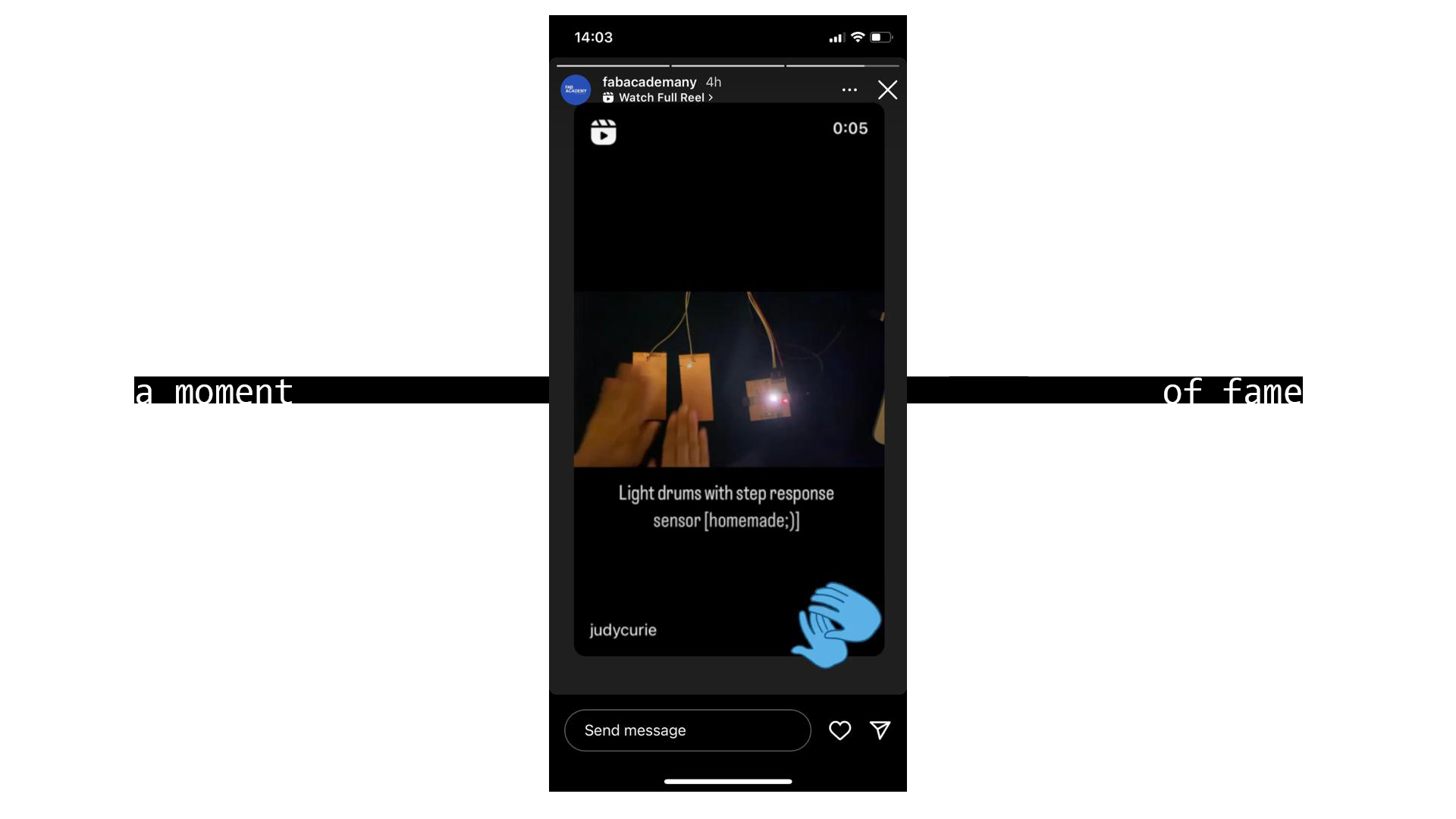
Take aways from the group Assignment¶
- digital inputs scale: 0-1
- analog inputs scale depends on the device but is not binary
| Input Type | Sensor |
|---|---|
| digital (discrete) | Selector switches,pushbuttons, thumbwheel switches, Photoelectric eyes, limit switches, circuit breakers, Proximity switches, level switches, Motor starter contacts, Relay contacts, Fans, lights, horns, valves |
| analog (contiunous) | Temperature sensors, CO2 sensors, Pressure sensors, Humidity sensors, Flow sensors, Potentiometers |
Lecture Notes¶
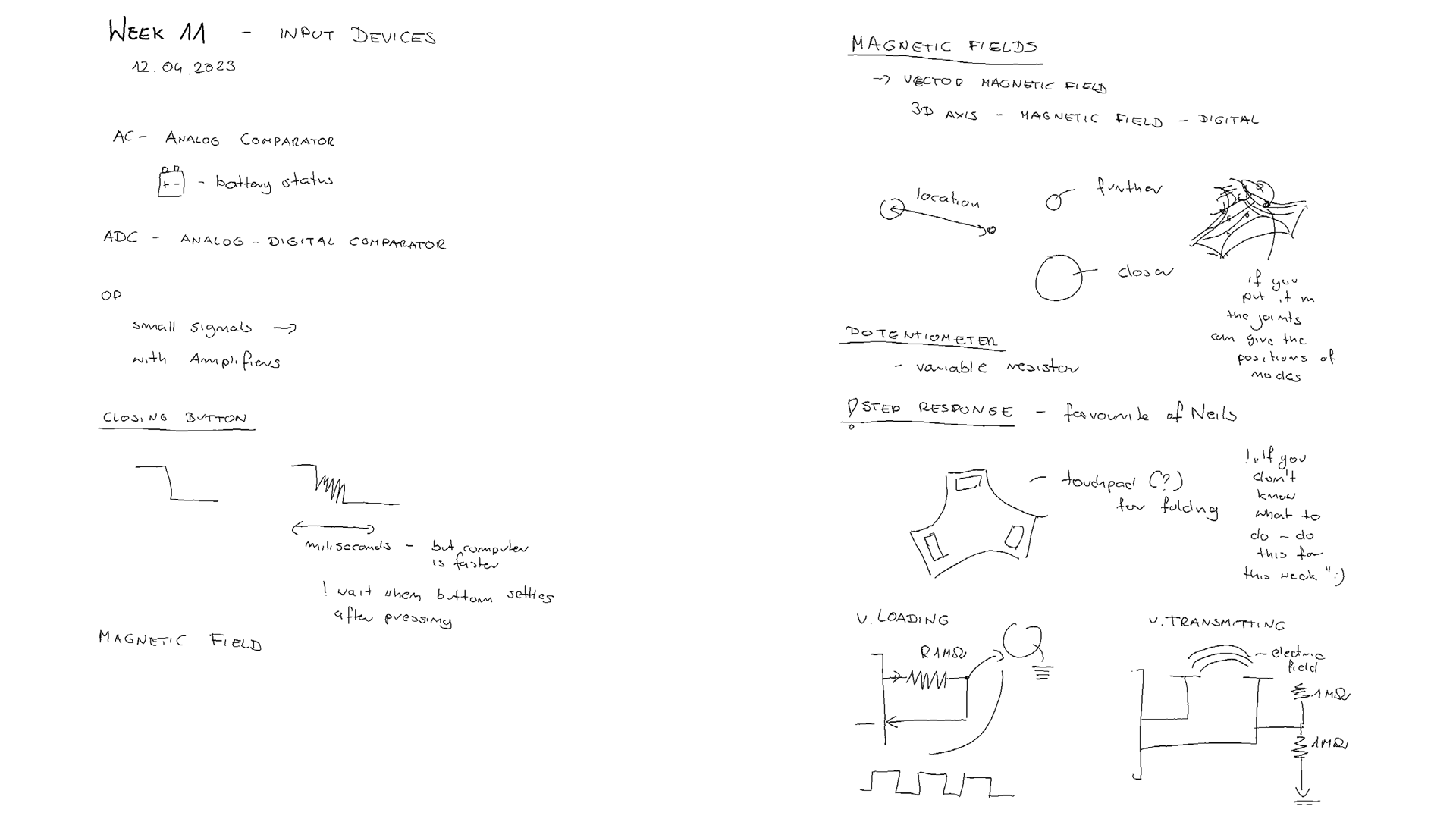
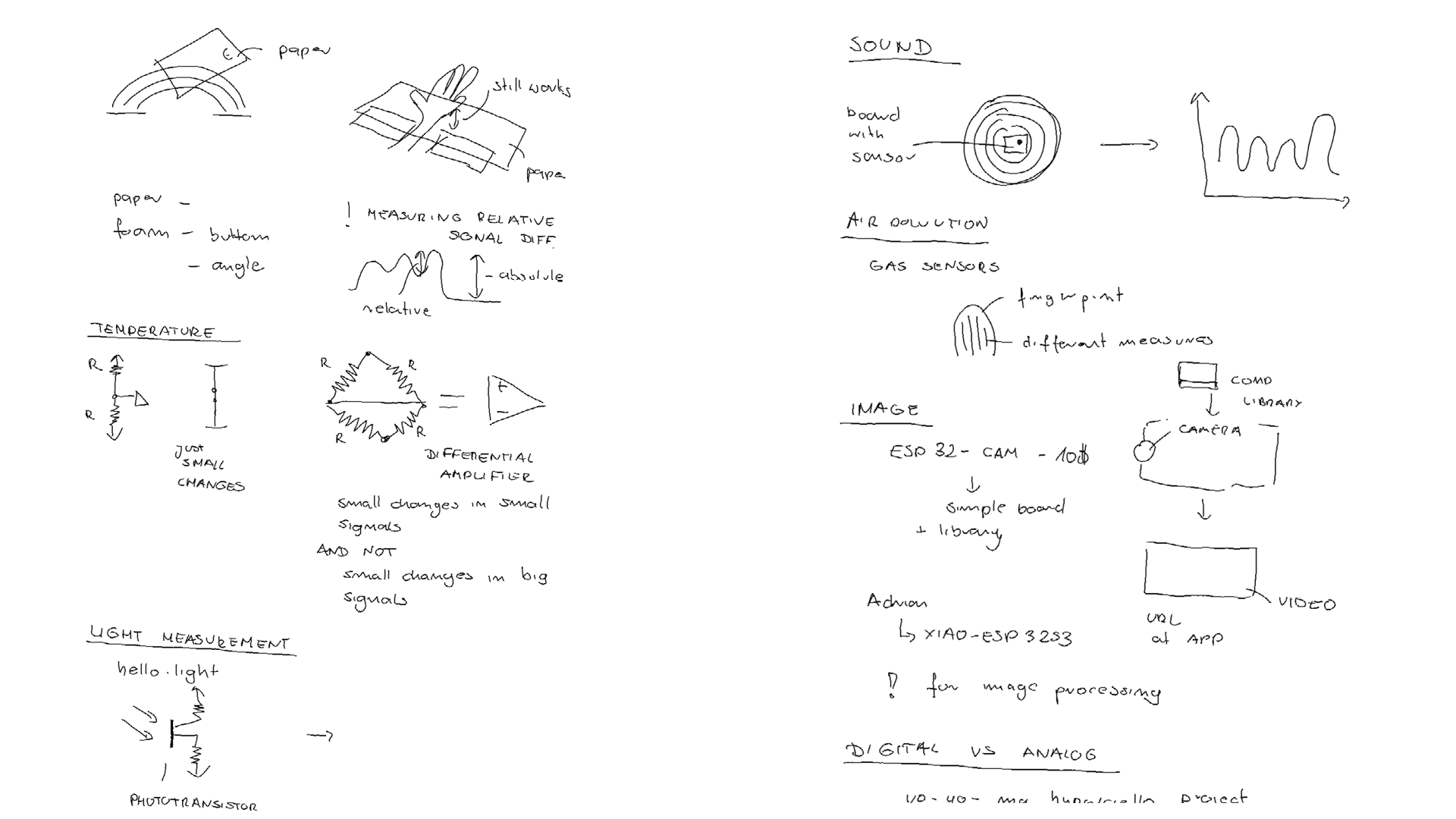

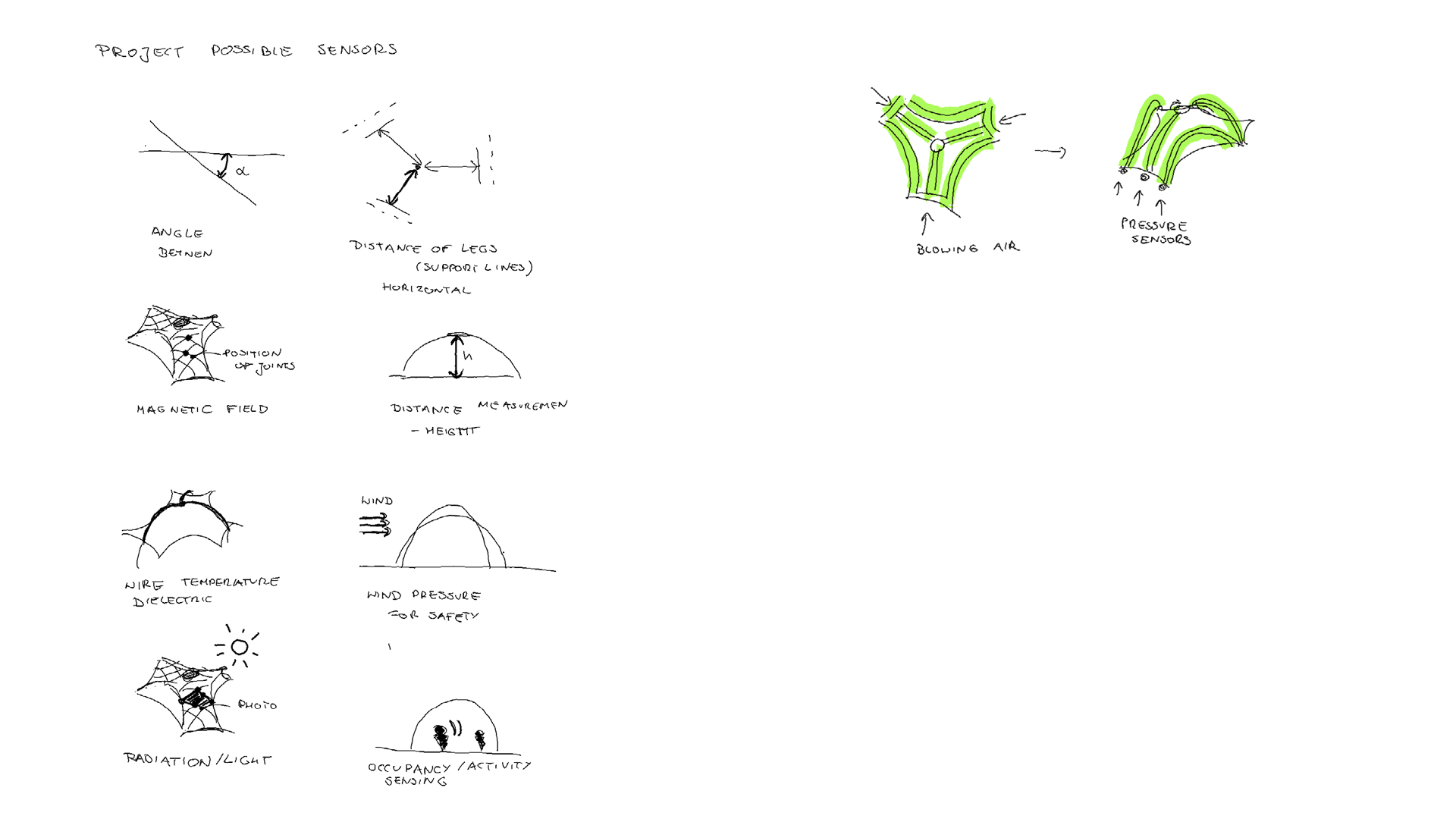
Step Response¶
Links: - bending with step responseShArc: A Geometric Technique for Multi-Bend/Shape Sensing
 Fig. Tx-rx sensing. source:https://roberthart56.github.io/SCFAB/SC_lab/Sensors/tx_rx_sensors/index.html.
Fig. Tx-rx sensing. source:https://roberthart56.github.io/SCFAB/SC_lab/Sensors/tx_rx_sensors/index.html.
Theoretical Explanation¶
tx - transmit electrode rx- receiving electrode
-
transmit (tx) pin is made alternately high (5V or 3.3V) and low (0V). This charges and discharges the tx electrode.
-
On the rx electrode there is a small ‘blip’ up or down as the tx pin toggles. These blips are measured by the analog input (ADC), and “low” subtracted from “high”
-
This result varies depending on how closely the two plates are coupled by the electric field. It increases as the distance decreases and also changes with the amount of overlap and the material between the plates.
Board Design¶
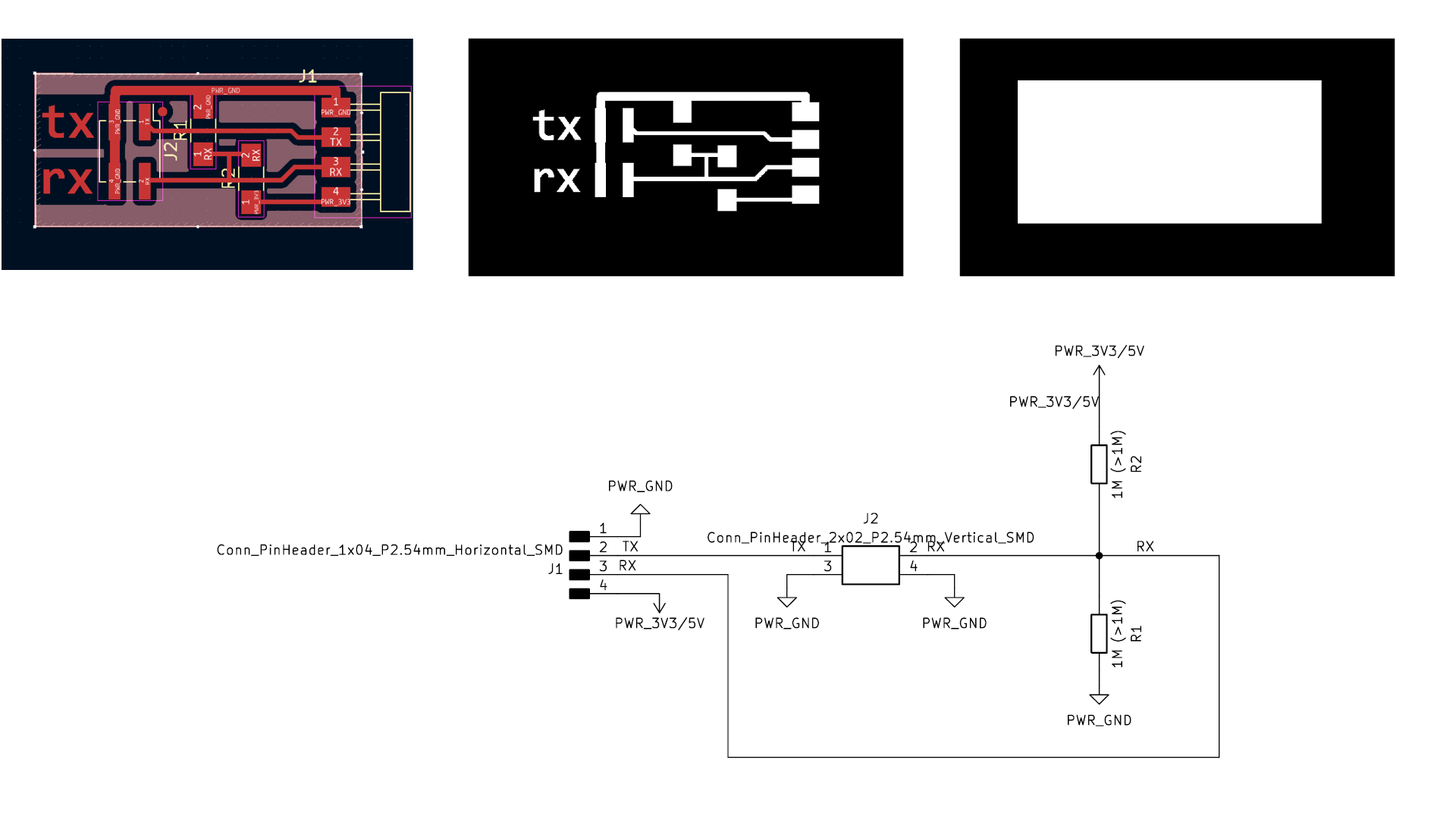 Fig. Left: Board Schematic KiCAD. Middle - Board FCu Layer. Right - Board - Edge Cuts. Bottom - Schematic Design.
Fig. Left: Board Schematic KiCAD. Middle - Board FCu Layer. Right - Board - Edge Cuts. Bottom - Schematic Design.
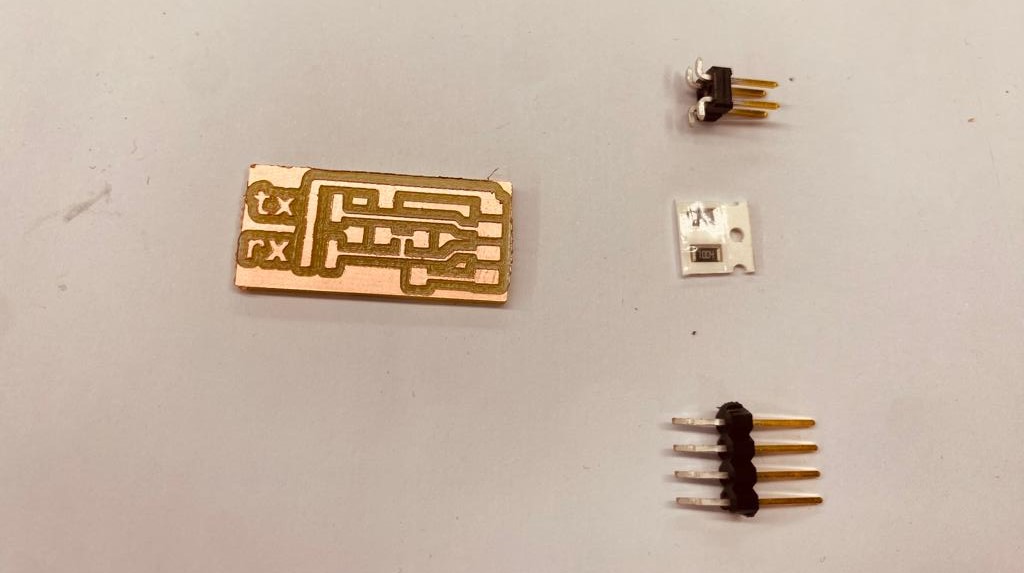 Fig. Produced Board and components.
Fig. Produced Board and components.
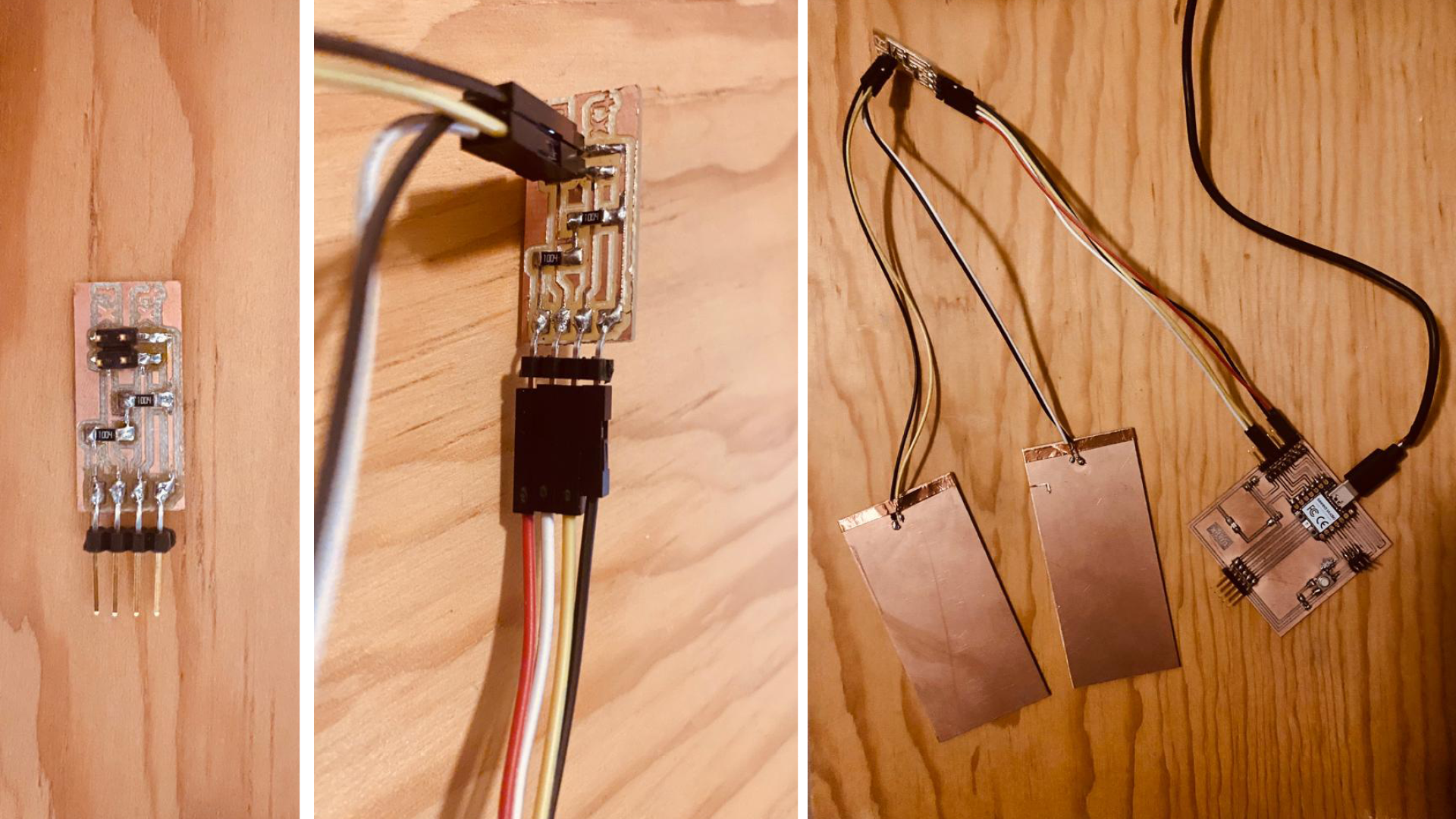 Fig. Soldered Board and connection to PCB pcb design
Fig. Soldered Board and connection to PCB pcb design
Micropython Code - Reading Step Response¶
from machine import Pin, ADC
import time
result = 0 # variable for the result of the tx_rx measurement.
analog_pin = ADC(29)
tx_pin = Pin(28, Pin.OUT)
led = WS2812(12,1)#WS2812(pin_num,led_count)
def tx_rx():
# Function to execute rx_tx algorithm and return a value
# that depends on coupling of two electrodes.
# Value returned is a long integer.
N_samples = 100 # Number of samples to take. Larger number slows it down, but reduces scatter.
sum = 0
for i in range(N_samples):
tx_pin.on() # Step the voltage high on conductor 1.
read_high = analog_pin.read_u16()# Measure response of conductor 2.
time.sleep_us(100) # Delay to reach steady state.
tx_pin.off() # Step the voltage to zero on conductor 1.
read_low = analog_pin.read_u16() # Measure response of conductor 2.
diff = read_high - read_low # Desired answer is the difference between high and low.
sum += diff # Sums up N_samples of these measurements.
return sum # End of tx_rx function.
while True:
result = tx_rx()
result = int((result - 22000) * (1024/(79000 - 22000))) # Mapping the values of the two copper plates, it will depend on their size.
print(result)
time.sleep_ms(100)
Micropython Code - Step Response and Color LED¶
from machine import Pin, ADC
import time
from ws2812 import WS2812
import utime
power = machine.Pin(11,machine.Pin.OUT)
power.value(0)
BLACK = (0, 0, 0)
WHITE = (255, 255, 255)
result = 0 # variable for the result of the tx_rx measurement.
analog_pin = ADC(29)
tx_pin = Pin(28, Pin.OUT)
led = WS2812(12,1)#WS2812(pin_num,led_count)
def tx_rx():
# Function to execute rx_tx algorithm and return a value
# that depends on coupling of two electrodes.
# Value returned is a long integer.
N_samples = 100 # Number of samples to take. Larger number slows it down, but reduces scatter.
sum = 0
for i in range(N_samples):
tx_pin.on() # Step the voltage high on conductor 1.
read_high = analog_pin.read_u16()# Measure response of conductor 2.
time.sleep_us(100) # Delay to reach steady state.
tx_pin.off() # Step the voltage to zero on conductor 1.
read_low = analog_pin.read_u16() # Measure response of conductor 2.
diff = read_high - read_low # Desired answer is the difference between high and low.
sum += diff # Sums up N_samples of these measurements.
return sum # End of tx_rx function.
r= []
while True:
result = tx_rx()
result = int((result - 22000) * (1024/(79000 - 22000))) # Mapping the values of the two copper plates, it will depend on their size.
print(result)
r.append(result)
time.sleep_ms(100)
c = int((result-800)/350*255)
color = [255-c,200-c,150-c]
#print(color)
led.pixels_fill(color)
led.pixels_show()
Final Video¶
Files¶
desing files: Xino - Step Response KiCAD
production files: Xino - Step Response - SVG/PNG